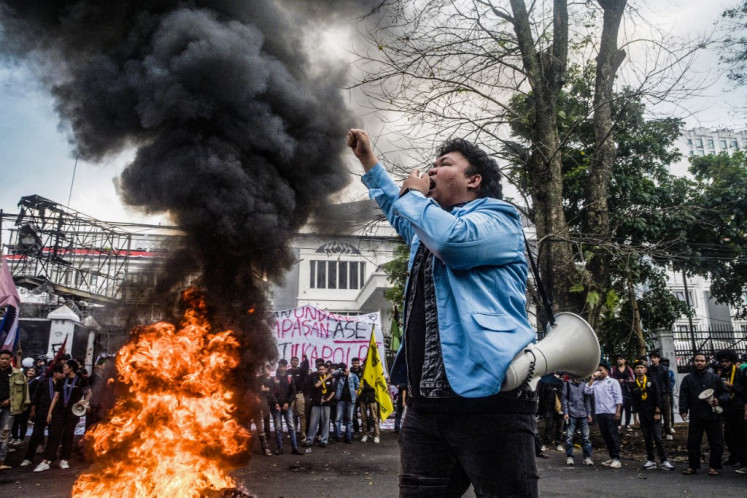Popular Reads
Top Results
Can't find what you're looking for?
View all search resultsPopular Reads
Top Results
Can't find what you're looking for?
View all search resultsDifference in perception of H1N1 risk
Recently my aunt, who lives in Jakarta, called me after hearing about my plan to visit Bali, my home town, this weekend
Change text size
Gift Premium Articles
to Anyone
R
ecently my aunt, who lives in Jakarta, called me after hearing about my plan to visit Bali, my home town, this weekend. She said worryingly, "Do you really need to go? Many people are infected with H1N1 flu there."
Interestingly, a completely different response came from my father - who lives in Bali - when I tried to confirm the risk level of H1N1 flu there. He answered swiftly, "Don't worry dear, the whole thing is just a bluff. Nothing has really happened here."
A total contrast. I said to myself, there has to be something wrong here: both of them cannot be right at the same time. The difference in perceptions offered me a glimpse of how Indonesians see this epidemic.
There is clearly a gap of perception in the minds of the public. If not tackled accordingly, this difference could pose a threat to the effectiveness of the government's pandemic protocols currently in place.
There are three reasons why people seek medical treatment: the severity of symptoms, the availability and affordability of care and the way the problem is perceived by the sufferer and those around them.
In the case of the H1N1 flu epidemic here in Indonesia, I believe this second, non-medical reason plays a much bigger role people's decision to seek care, because - in contrast to the avian flu, for which the symptoms are severe and mostly fatal - H1N1 flu symptoms are mild to moderate. The majority of cases do not even need hospitalization.
Of the three motives for seeking treatment, the availability and affordability of care should not be a problem anymore here in Indonesia.
That leaves us with the third motive for care seeking: How the patient perceives the risk of this epidemic. Therefore, it is important to bridge the difference in perceptions, like the one between my aunt and father.
Imagine if my father - or anyone who perceives of this epidemic as a mere *bluff' as he put it - somehow catches a cold after being in contact with someone suspected of carrying the H1N1 virus.
Obviously, he will be hesitant to be examined because he believes the threat is not real. He does not understand the importance of following epidemic treatment protocol - including being quarantined if necessary - for something you can treat at home. His personal gain for doing the right thing, according to the protocol, is limited.
That kind of respond - based on the false perception about the severity of this epidemic - is exactly what public health officials now feared. There are three epidemiological facts on the H1N1 flu epidemic in Indonesia: the viral strain did not originate in Indonesia, the virus is easily transmitted from human to human and therefore those who are infected pose a threat to others and, lastly, and effective and safe vaccination is not yet available.
Therefore, border control and appropriate treatment for patients based on pandemic protocols are essential to preventing the further spread of H1N1 flu in Indonesia. Moreover, Indonesia has the potential to become the breeding ground for a mutation of the deadly avian flu and the easily transmittable H1N1 flu. That is why Indonesian pandemic protocols must be strictly followed.
It is in this context that public awareness and the observation of the protocols is essential. We play a significant role in preventing the probability of a future epidemic. If more and more Indonesians perceived of this threat as a real danger, then our chances of escaping a major epidemic will increase.
Border control and the strict implementation of epidemic control protocols are not cheap - especially for emerging economies in the middle of a global financial crisis like Indonesia.
However, the cost of the potential mixing of the H1N1 flu virus and H5N1 avian flu virus would be more devastating.
For that reason, let all of us participate, obey and adopt the protocols that have been set by the Health Ministry. Do this not just for yourself, but for others. There is no need to panic, but be reasonable.
The writer is a health practitioner who graduated from the Royal Tropical Institute in Amsterdam, Holland.










